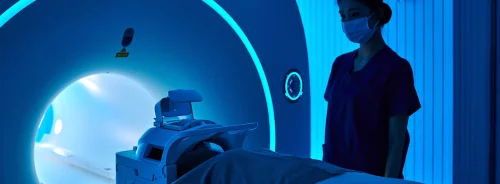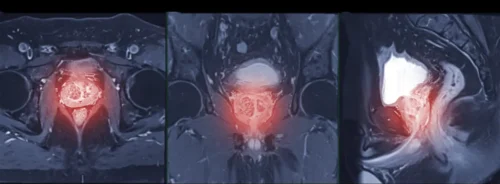Objectives:
To demonstrate a reduction in keystrokes and ultrasound exam time by utilizing the Mindray DC-8 iWorksTM and iWorksOBTM protocol manager with the iNSertTM feature for documenting pathology.
Methods:
Three sonographers performed carotid exams, abdominal exams and thyroid exams using manual annotations and measurements and following a scripted exam protocol.They then repeated those exams using the iWorkTM protocol management feature.The sonographers also performed three OB exams using a defined list to obtain fetal biometry and anatomy images then repeated those exams using the programmed exam survey list of the iWorksOBTM feature. The number of keystrokes, excluding annotations, was recorded by two different observers using manual counters for all exams. The keystrokes that were documented included changing depth, focus, freezing and storing the images and activating various modes and functions, such as Doppler and measurement calipers. The annotation keystrokes were determined by reviewing the stored images and counting the number of letters and spaces. The time to complete each exam was recorded by one observer with a stopwatch. The three sonographers were multi-credentialed with a variety of clinical experience and different levels of experience with the DC-8 ultrasound system.
Once activated, the iWorksTM protocol management feature displays a list of the images required for each type of exam, thus prompting the sonographers to follow a specific sequence throughout each exam.Once each image is acquired, the protocol management feature automatically enters the appropriate annotation for the next image. When images that require a measurement are frozen, calipers are automatically displayed on the ultrasound image. For those images requiring a mode change as part of the exam (Such as: color Doppler, pulsed Doppler, power Doppler, M-mode, panoramic view…etc.), the protocol management feature will activate that mode automatically.
When the sonographers selected iWorksOBTM , a list of four categories were available:
1) maternal survey;
2) biometry;
3) fetal heart rate;
4) fetal anatomy survey.
By selecting each category, sonographers were provided with a “check list” of images to capture along with the appropriate annotations that were automatically displayed on the image.For the biometry images, measuring calipers were automatically displayed and could then be manipulated by the operator.
The final evaluation involved a thyroid exam for a patient who had three thyroid cysts using the iWorkTM protocol management feature with a newly designed function called iNSertTM.The iNSertTM feature can be activated once pathology is detected, and it brings up relevant annotation and the calipers for measuring a mass or multiple masses. The majority of protocol management features on the market do not make allowances for pathology documentation during an exam. Once pathology is detected, the sonographer has to suspend the protocol management feature to manually document, measure and annotate the pathology. The thyroid exam comparison was performed with and without the use of the iNSertTM feature.Results: All exams tested with iWorksTM Management Protocol showed a reduction in exam time and in the number of keystrokes when compared to exams performed manually.The thyroid exams demonstrated up to a 58% reduction in exam time, the carotid exams demonstrated up to 43% reduction in exam time, and the abdominal exams demonstrated up to 45% reduction in exam time. A paired t-test demonstrated that this reduction in time was statistically significant (p<0.05) for these exams:
The percentage of reduction in time is higher than would be expected simply because the sonographers had become familiar with the patient and with the ultrasound system. The keystrokes for the thyroid exams were reduced by as much as 80%, 75% for the carotid exams, and up to 86% for the abdominal exams. The paired t-test demonstrated that this difference was statistically significant for all exams. The iWorksTM feature was even more efficient when the sonographers used the frame grabber capability of the ultrasound system which allowed them to store images and move through the automatic protocol without freezing the images.
Two of the three OB exams demonstrated a reduction in exam time when the iWorksOBTM was used but the difference in time was not statistically significant (p=0.28261). Fetal movement and changes in position throughout the exam contribute to length of the exam and add a variable that cannot be controlled. The length of these exams was related more to finding the optimal view of the fetal anatomy than to the time involved in annotating and measuring. Keystrokes were reduced by 67%, 73%, and 74% when each exam was repeated using iWorksOBTM ,and the difference was statistically significant (p= 0.00359).
There was up to 35% reduction in exam time between the thyroid exams done using the iNSertTM feature and exams done manually.The difference was not statistically significant (p=0.13467).The keystrokes to annotate and measure all three thyroid masses followed a scripted protocol. iNSertTM automatically annotates each image, 18 keystrokes were required to measure the dimensions of each thyroid mass.The manual exam required 81 keystrokes. This is the combination of the number of keystrokes required to measure each mass and to annotate each image.When iNSertTM was used, the only keystrokes required were those to move and set the measurement calipers.The benefit of the difference in keystrokes when iNSert was used was significant.
Discussion:
The subjective nature of ultrasound exams can contribute to confusion over the sequence of images and the annotations on the images. Individual sonographers scanning styles vary, which causes a lack of consistency in the images acquired. The interpreting physicians must decipher different annotation abbreviations and various measurement techniques, which adds to the time needed to provide a diagnosis. The wide variety of exam protocols and image annotations makes it difficult to replicate an exam from sonographer to sonographer. In addition, the number of images varies widely making it a challenge for sonographers to repeatedly provide a comprehensive exam. Without standardized protocols, there is always the possibility that significant images will be inadvertently omitted and that the exams will not follow a logical sequence. Annotations tend to be individualized, making it time consuming for the interpreting physicians to determine if all pertinent images are present. Ultrasound departments are faced with providing quality patient exams while maintaining a certain level of productivity. A protocol management feature can be one tool that can save exam time, increase through-put and standardize each type of exam.Standardizing exams allows for more reliable reproducibility among sonographers and between different facilities.Therefore, if a patient requires additional exams, he or she will receive the same level of care regardless of who performs the exam or at what facility the exam is performed.
The added feature of iNSertTM streamlines the documentation of pathology. Once a lesion is detected, the sonographers can easily activate the iNSertTM feature, document and measure the lesions (or multiple lesions) and can then return to the exam protocol to finish the exam in a logical and standardized manner. Often masses are incidental findings so sonographers may start the exam using a protocol management feature only to find that they have to suspend the feature to document the unexpected findings. This may be cumbersome and could result in a decreased use of the protocol management feature overall or inadvertent omission of required images. However, having the option of staying within the protocol management feature to document pathology will not only shorten exam time but will make the feature a more desirable option.
Protocol management features are valuable tools for teaching ultrasound students, medical students, residents, and non-traditional ultrasound practitioners. One of the challenges of learning ultrasound is determining which images should be acquired and the appropriate sequence for those images. The protocol management feature eliminates the subjectivity of the exam and provides a guideline for the examiner to follow while learning all the other components of scanning.
The random nature of OB exams, resulting from fetal movement and position, requires a protocol management feature that is not as linear as other types of exams.Having a “check list” that indicates which images have already been acquired, ensures that the fetal survey is complete and that no images are inadvertently omitted.
Reducing the amount of keystrokes and time spent with non-scanning activities reduces the physical and mental fatigue factor that can enter into each exam.This fatigue will vary from user to user, thus causing a wide variety of exam times among the staff. However, care must be taken when attributing keystroke reduction to a reduction in workrelated musculoskeletal disorders or repetitive motion injuries. It is a widely held belief that repeatedly accessing the control panel keys can lead to injury. However, movement of the arm and hand is actually beneficial. Movement causes muscle contraction and relaxation activities that pump oxygenated blood into muscles and allow de-oxygenated blood to drain out. This is the principle behind exercise. In fact, the static position of the typing hand can be a source of injury if the sonographer rests his or her wrist on the edge of the control panel. The ergonomic benefit, therefore, of the protocol management feature lies in the reduction of transducer (scanning) time.A shorter exam time allows sonographers to do other job tasks using the arm and hand muscles differently or to have additional muscle recovery time.
Conclusions:
A protocol management feature provides important benefits for the ultrasound lab, including:
• Standardized, reproducible exams
• Teaching tool
• Keystroke reduction
• Reduce patient exam times and increase through-put
The protocol management feature is beneficial to all ultrasound practitioners, from the experienced sonographers to the new students and non-traditional users.
References:
1. Robbin ML, Lockhart ME, Weber TM, Tessler FN, Clements MW, Hester FA, Berland LL. Ultrasound Quality and Efficiency. J Ultrasound Medicine 2011; 30:739-743.
2. Brandli L. Benefits of Protocol-driven Ultrasound Exams. Radiology Management July-Aug 2007: 1-4.
Latest Articles
Ultrasound, Lab Efficiency , Mindray, Pathology, Doppler
To demonstrate a reduction in keystrokes and ultrasound exam time by utilizing the Mindray DC-8 iWorksTM and iWorksOBTM protocol manager with the iNSertTM feature for documenting pathology.




